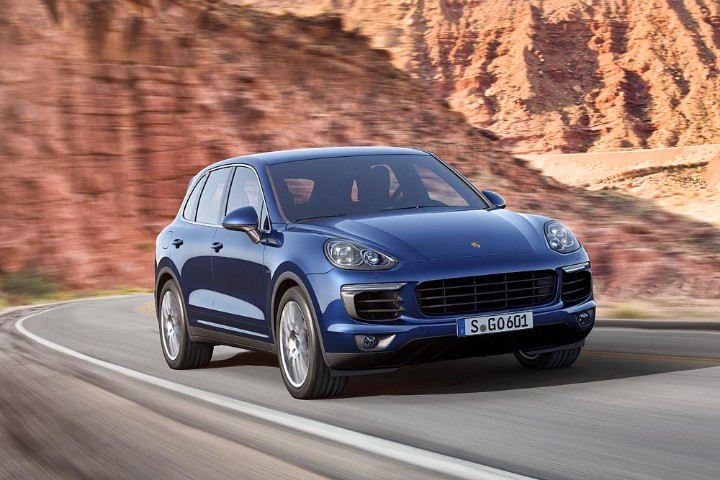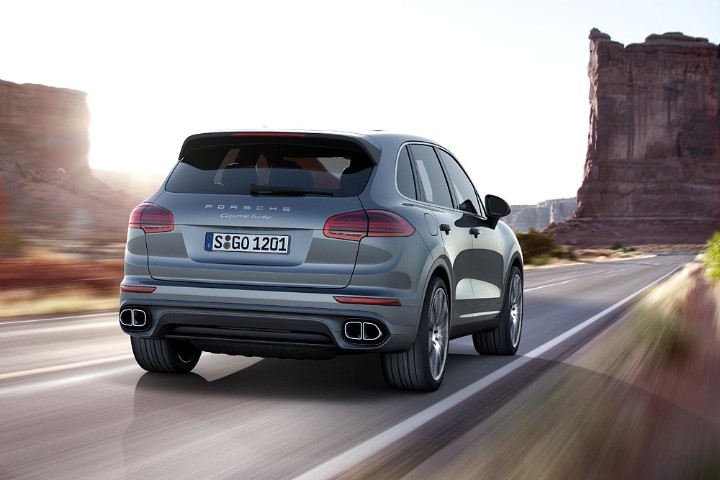Facelift for 2nd gen Porsche Cayenne
Judging from the Cayenne’s popularity, it is not far-fetched to say that Porsche’s foray into the SUV market has been a largely successful and we would presume highly profitable venture. The company is unsurprisingly building on that success with the smaller-sized Macan.
The original Cayenne, a joint development with Volkswagen and Audi that also created the first-generation Touareg and Q7, debuted in 2002, and sold 276,000 units in its eight year life span. The second-generation model followed in 2010, and to date, it has accumulated 303,000 sales.
Four years from its launch, the stage is now set for the global debut of a facelifted version of the second-generation Cayenne slated for its first public appearance at this year’s Paris Motor Show. A total of five variants will be introduced, namely the S, Turbo, Diesel, S Diesel, and S E-Hybrid.
Appearance-wise, the Cayenne looks subtly updated from its predecessor, but closer inspection reveals entirely new sheet metal forward of the A-pillar, with the bonnet and front fender being fully revised along with the front bumper, enhanced with more substantial air intake fins.
Variant for variant, all versions of the new Cayenne are said to be more economical than their predecessors. The S E-Hybrid replaces the previous S Hybrid variant incorporating, for the first time in the premium SUV segment, the option of a plug-in hybrid powertrain.
Fully charged, the Cayenne S E-Hybrid, aided by its 10.8kWh lithium ion battery, is able to travel on electric power only 18-36km depending on driving conditions. The S E-Hybrid also benefits from a significantly more powerful electric motor, going from 47hp with the outgoing S Hybrid to 95hp. Fuel consumption of this variant rated in the combined cycle is a remarkable 3.4 l/100km, with CO2 corresponding at 79 g/km.
The regular Cayenne S, meanwhile, is the recipient of a downsized petrol engine, switching from a naturally-aspirated 4.8-litre V8 to a 3.6-litre bi-turbo V6 that follows a now-predictable script of offering simultaneous improvements in output and economy – from 400hp and 10.5 l/100km previously to 420hp and 9.5-9.8 l/100km currently. With a standard 8-speed automatic transmission, the new Cayenne S maxes out at 259kph and completes the century dash in 5.5 seconds.
Diesel versions are also the recipient of upgraded powertrains – the regular Cayenne Diesel having its 3.0-litre V6 massaged to 262hp and 580Nm, whilst the 4.2-litre V8 Cayenne S Diesel monsters out 385hp and 850Nm. These performance oil burners complete the century sprint in 7.3 and 5.4 seconds respectively, with fuel consumption rated at 6.6-6.8 l/100km and 8.0 l/100km respectively.
Top of the range, the Cayenne Turbo continues with its existing 4.8-litre bi-turbo V8 engine configuration, but with outputs ramped up from 500hp/700Nm to 520hp/750Nm. This lets the Cayenne Turbo accelerate from zero to 100 km/h in just 4.5 seconds (4.4 seconds with the optional Sport Chrono package). Its top speed is 279 km/h. Fuel consumption is 11.2-11.5 l/100 km (267-261 g/km CO2).
KON
Pictures: Official Porsche release.

























